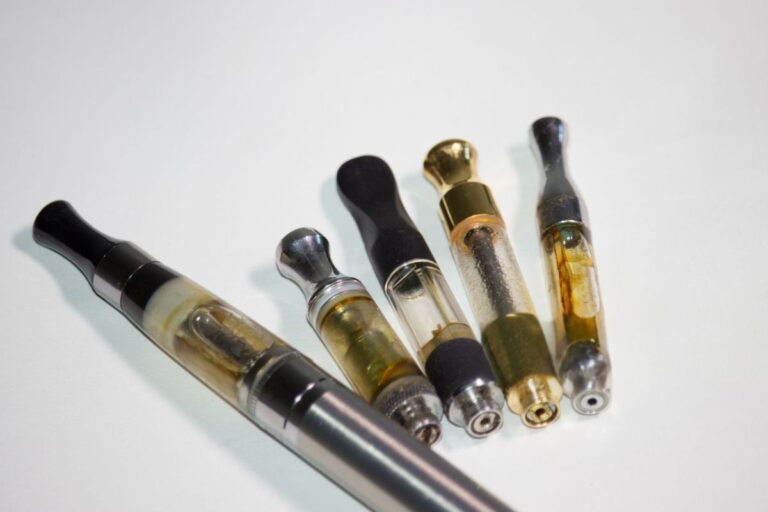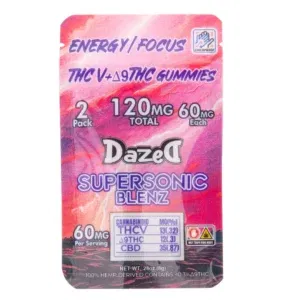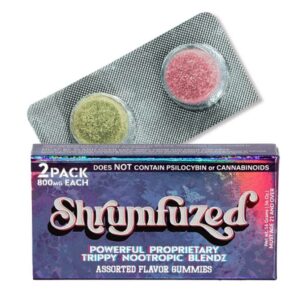How Long Does Weed Stay in Your System After a Couple of Puffs? Quick Detection Guide
Figuring out why **weed** hangs out in your body longer after you enjoy a puff is not a walk in the park. The time it lingers depends on several factors: your puffing habits, your metabolism, and the potency of your weed. For occasional users, THC—the magic ingredient that sends you to cloud nine—sprints through your bloodstream and exits swiftly. But for the regulars, THC decides to bunk with you much longer. Once THC enters your system, it peaks in your blood about 9 minutes in. However, THC’s voyage inside you can vary, swayed by how bold your weed is and its THC content. If unraveling the mystery of how weed interacts with your body piques your interest, you’re in the right spot. Hang tight, and you’ll learn some cool hacks that go beyond common knowledge!
Table of contents
- Cannabis Basics and THC Composition
- Weed Consumption Methods
- Factors Influencing Detection
- Detection of THC in Bodily Fluids
- Drug Testing Types and Window Periods
- Influence of Cannabis Potency
- Impact of Lifestyle Choices
- Legal and Societal Considerations
- Short-Term and Long-Term Effects of Weed
- Frequently Asked Questions
Various testing methods have different windows of detection. Urinalysis, the most common drug testing method, can detect marijuana for days to weeks after use, depending on your usage patterns. Hair follicle tests have a longer window of detection, potentially up to 90 days. It is important to understand that even when the noticeable effects of marijuana, such as the high, wear off quickly, THC metabolites can remain in your system and be detectable for a prolonged period. Individual metabolism plays a significant role in how quickly these substances are broken down and excreted from your body.
Cannabis Basics and THC Composition
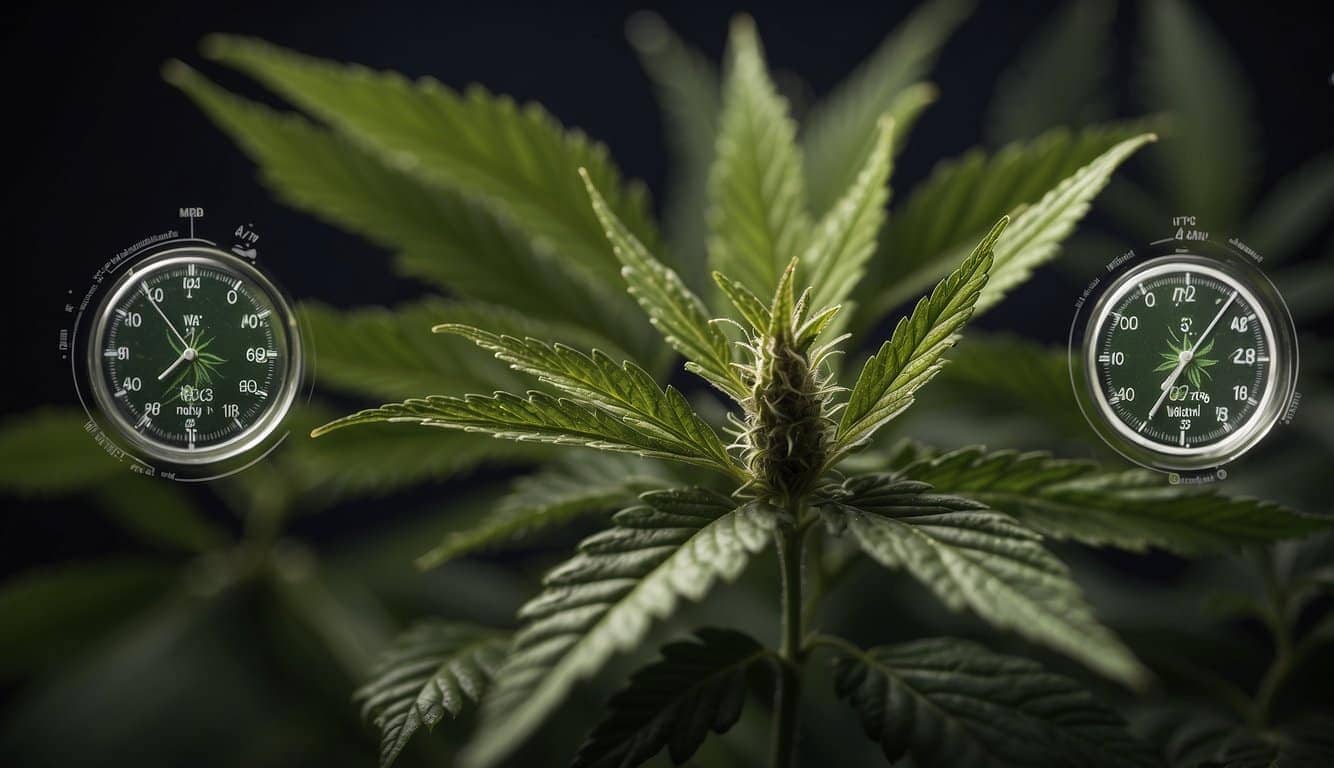
In discussing how long weed stays in your system, understanding the key components of cannabis, especially THC, is crucial. This primary psychoactive compound affects how long the substance can be detected in your body.
Understanding THC
Tetrahydrocannabinol, or THC, is the main psychoactive ingredient in cannabis. When you consume marijuana, THC interacts with your body’s endocannabinoid system, leading to the “high” you experience. The strength and duration of this effect can depend on various factors, including the THC composition within the cannabis plant.
Cannabis contains over 100 different cannabinoids, but THC is the most well-known due to its potent psychoactive properties. Interestingly, the structure of THC is what allows it to bind so effectively to your brain’s cannabinoid receptors. This binding is what triggers the majority of the drug’s effects.
Apart from recreational use, THC also has medicinal applications due to its ability to alleviate certain symptoms such as pain and nausea. However, its legal status varies depending on the jurisdiction.
When you take a puff of weed, THC enters your bloodstream quickly, which explains why you feel its effects almost immediately. The peak THC concentrations in your blood occur shortly after consumption, but the rate at which THC is metabolized can vary widely among individuals. Variables such as the number and length of puffs, the hold time, and the time between puffs play a significant role in how much THC enters your system.
Remember, THC is fat-soluble, meaning it can be stored in your fat cells and released over time, which contributes to the variability in how long it can be detected in your system after those initial puffs.
Weed Consumption Methods
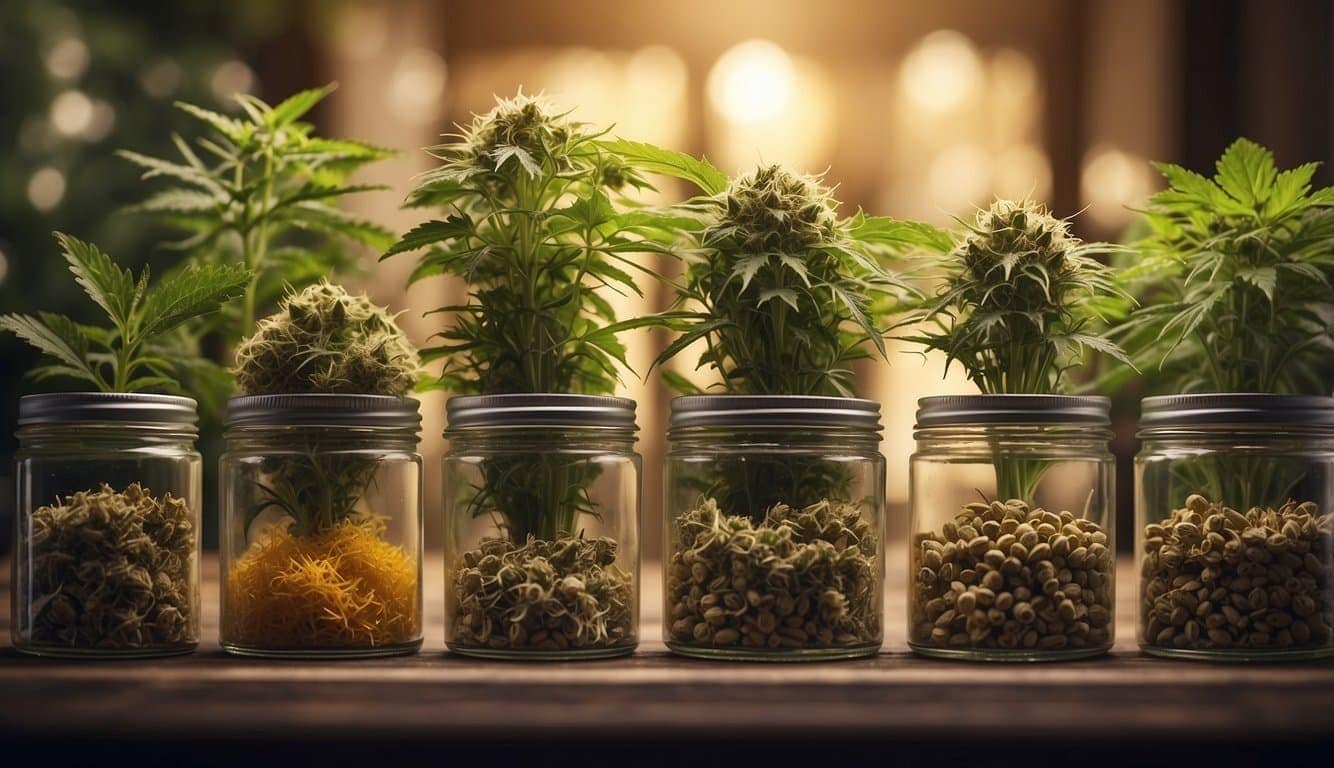
Different consumption methods of weed affect how long THC remains detectable in your system. Each method influences the onset and duration of effects due to variations in absorption and metabolism.
Smoking and Inhalation
When you smoke weed, THC enters your bloodstream rapidly through the lungs. This method is known for its immediate effects, with maximal THC levels occurring immediately after usage. The duration THC stays in your body varies based on frequency of use and individual metabolism, but one-time users may have THC in their system for a few days, while heavy users might test positive for a month or more.
- Quick onset: Inhalation leads to rapid absorption, with effects felt within minutes.
- Effect duration: Highly dependent on personal usage patterns and individual metabolism.
Edibles and Other Methods
In contrast, ingesting weed through edibles introduces THC into your system via the digestive tract. This method results in a delayed onset of effects, as it takes longer for THC to reach the bloodstream. Once ingested, THC is metabolized in the liver into a more potent form, which can cause edibles to deliver a more intense and longer-lasting high. Detection times may extend beyond those associated with inhalation due to the prolonged process of digestion and metabolism.
- Delayed onset: Effects from edibles can take 30 minutes to 2 hours to manifest.
- Prolonged effect duration: The high from edibles can last longer, so THC may be detectable in your system for an extended period in comparison to smoking.
Understanding these methods helps you anticipate the duration of effects and the window of detectability in drug tests. Keep in mind, personal body chemistry plays a significant role in these factors.
Factors Influencing Detection
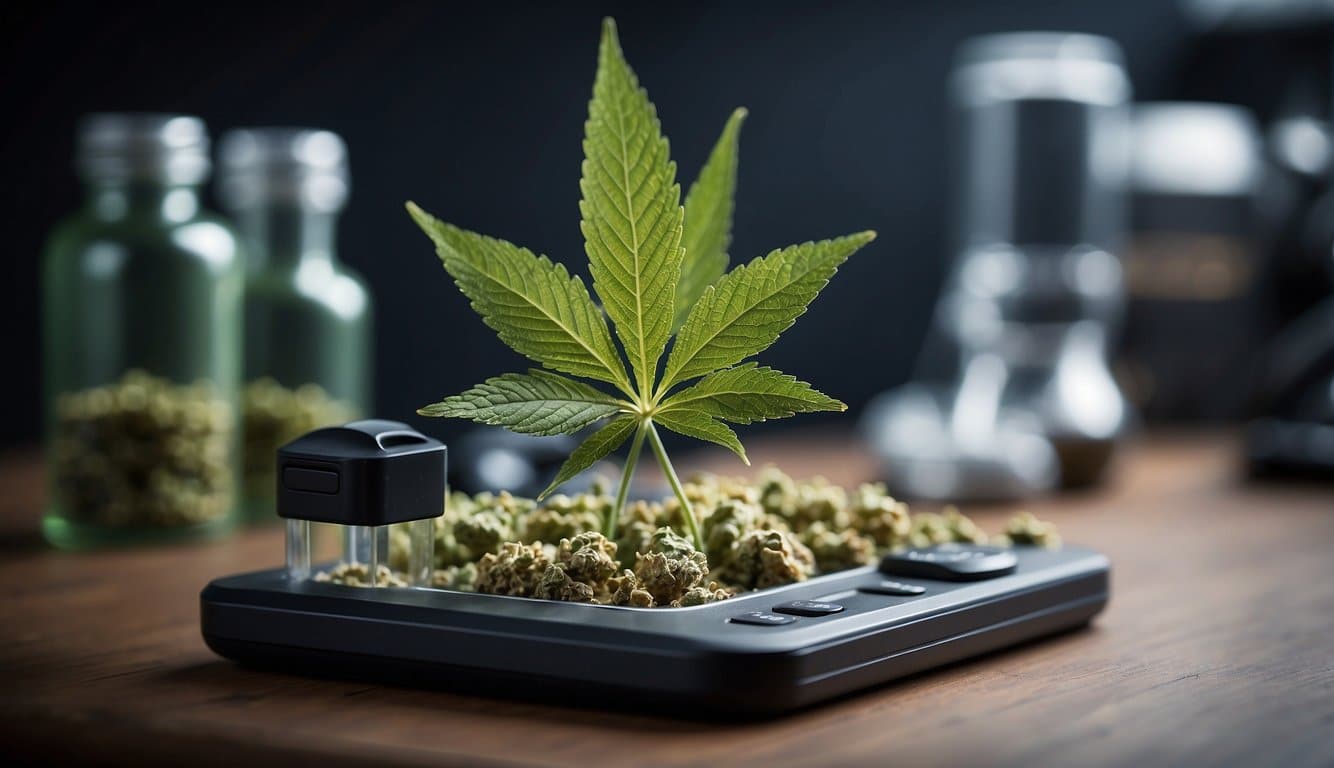
When it comes to how long weed stays in your system after a couple of puffs, several factors significantly impact the detection of cannabis components. These include your body’s metabolism, the frequency and amount of marijuana you use, and your body mass index (BMI) which correlates with fat cells where cannabis metabolites can be stored.
Metabolism and Body Chemistry
Your metabolism plays a critical role in processing THC, the psychoactive substance in cannabis. A faster metabolism will break down THC more quickly, which can shorten the window of detection. Hydration levels, healthy eating, and regular exercising can all enhance your metabolic rate. Conversely, factors like age and specific genetic markers could result in a slower metabolism, meaning THC might linger longer in your system.
Frequency and Quantity of Use
A direct correlation exists between how often you use cannabis and the length of time its metabolites might be detectable. Infrequent users might find that THC leaves their system fairly quickly, whereas chronic use can lead to accumulation in fat cells, prolonging detection times. The dose plays a vital part too; a few puffs have less THC compared to consuming higher quantities, which will naturally take longer to metabolize.
Body Mass Index and Fat Cells
Since THC is fat-soluble, it can be stored in body fat. This can affect both the length of time and the detection of THC in your system. Individuals with a higher BMI and more body fat may hold on to these metabolites longer, making THC detectable for an extended period, especially in the case of daily smokers. Regular exercise and maintaining a healthy diet can assist in reducing body fat, which might aid in a more efficient detox process.
Detection of THC in Bodily Fluids
When you use cannabis, THC is absorbed into your system and can be detected in various bodily fluids for varying amounts of time. How long these traces can be found depends on several factors, including the frequency of use and personal metabolism.
Blood THC Detection
The detection window in your blood for THC is relatively short. After a couple of puffs, THC is typically identifiable in your bloodstream within seconds. For occasional users, THC may be detected in blood tests for about 1-2 days, while for more frequent users, the detection window can be longer. Blood tests measure the active presence of THC, indicating recent use rather than long-term exposure.
Urine THC Detection
Urine tests are among the most common screenings for cannabis use. The detection window for urine is longer because it measures THC by-products or metabolites, which linger longer than the active compound. For infrequent users, urine may test positive for THC metabolites up to 3 days after a couple of uses. In contrast, frequent users might have a detection window that spans several weeks to over a month.
Saliva THC Detection
Saliva tests for THC indicate very recent usage. After just a few puffs, THC may be present in your saliva for 24 to 72 hours. For more habitual users, the detection time could extend slightly longer. These tests are often used for roadside testing due to their convenience and the quick detection of active THC.
Hair THC Detection
Hair follicle tests have the longest detection window for THC. After cannabis intake, THC reaches the hair follicles through small blood vessels, and trace amounts can be detected as long as 90 days or more following exposure. However, hair tests are less commonly used due to their expense and the more extended detection window, which may not be as relevant for determining recent drug use.
Drug Testing Types and Window Periods
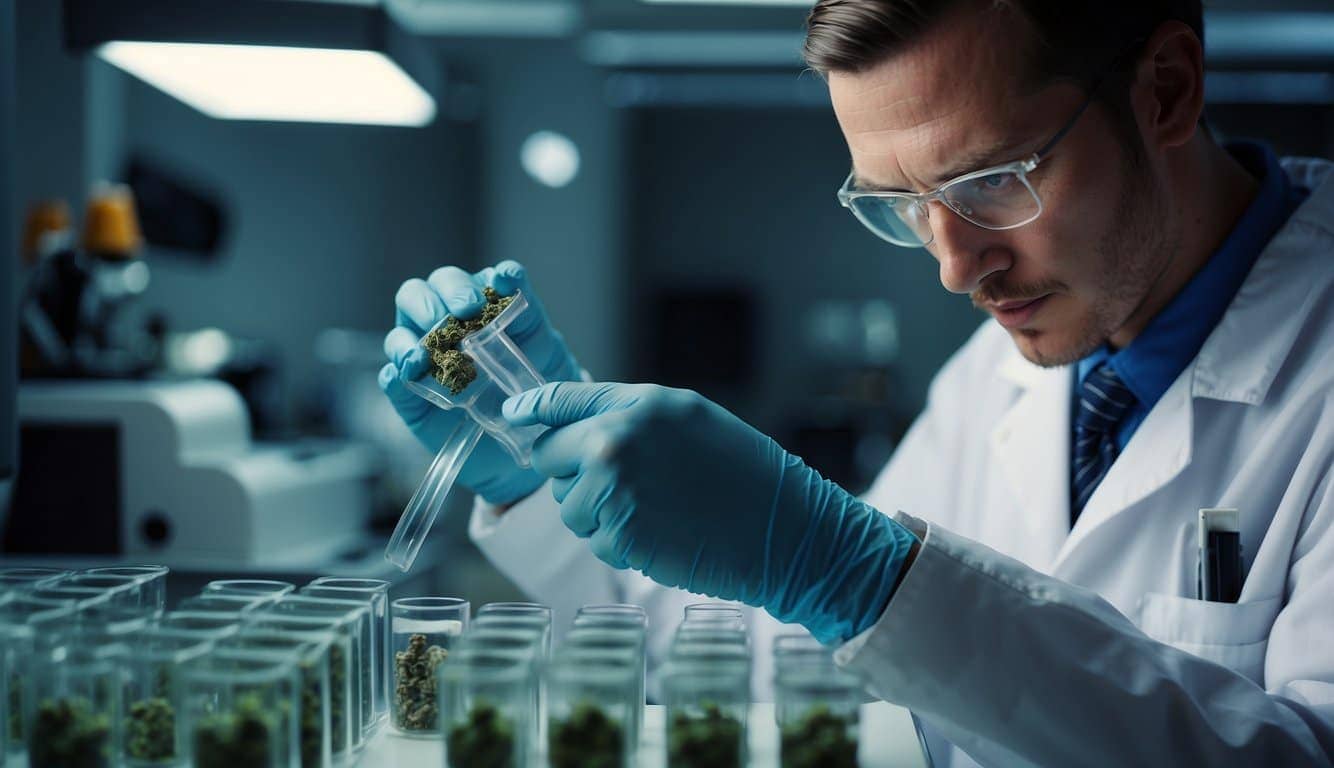
Understanding the various types of drug tests and their detection windows is crucial for comprehending how long weed may be detectable in your system after consuming a couple of puffs.
Urine Drug Tests
Urine drug tests are the most common method for detecting marijuana use. The detection window for a positive urine test can vary depending on your usage pattern and the sensitivity of the test. For infrequent users, marijuana may be excreted and detectable for up to 3 days, while regular users might test positive for up to 30 days.
Blood Drug Tests
Blood tests offer a shorter detection window for cannabis compared to urine tests. Typically, THC is detectable in the blood for 1 to 2 days after a single use. However, if you’re a heavy user, it could remain for up to 7 days. The frequency and quantity of use greatly affect the detection times in blood tests.
Saliva Drug Tests
Saliva tests are used for roadside checks and workplace testing due to their convenience. Detection of cannabis in saliva can range from a few hours up to 24 hours after occasional use. Unlike blood or urine tests, saliva tests may have a narrower detection window but are effective for identifying recent drug use.
Hair Follicle Tests
Hair follicle tests have a much longer detection period than other types of drug tests. Following use, cannabis metabolites may be found in hair follicles for up to 90 days. This type of test provides a more comprehensive overview of past drug use but is not as effective at detecting recent, single-use events like a couple of puffs.
Influence of Cannabis Potency
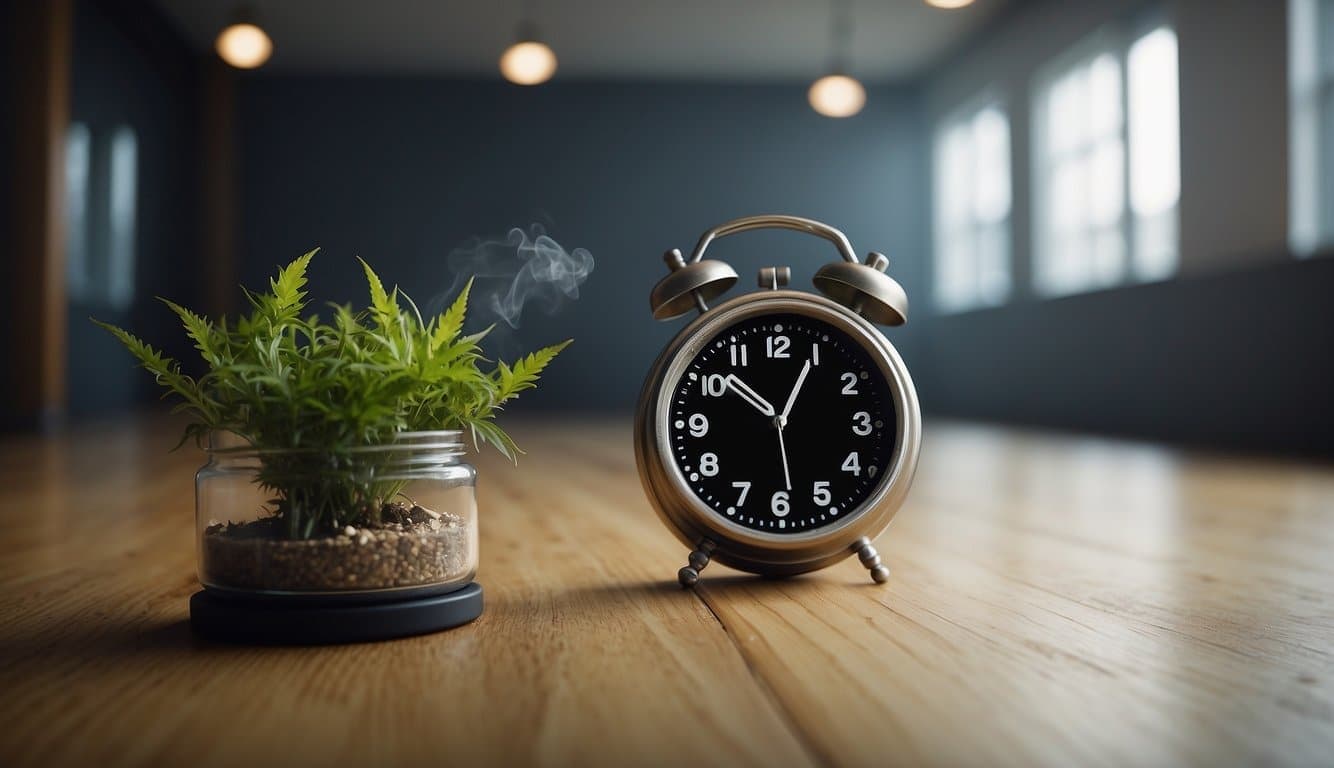
When you consider how long weed stays in your system, the potency of the cannabis plays a crucial role. Higher THC concentrations mean more of the compound can enter your bloodstream, potentially prolonging the duration it remains detectable.
THC Concentrations
The potency of cannabis is directly tied to its THC content, which is the primary psychoactive component responsible for the drug’s effects. The concentration of THC in weed has been increasing over the years, meaning that even a couple of puffs from a high-potency marijuana cigarette could result in a substantial amount of THC entering your system.
- High-Potency Strains: These may deliver a large dose of THC even with minimal consumption, influencing how long THC will be detectable in your body.
- Number of Puffs: It’s not only the concentration of THC but also how many puffs you take that determines the THC level in your bloodstream.
- Weed Smoke: The tar in weed smoke can contain varying levels of THC, which also contributes to the overall potency and impact on your system.
Inhalation is a quick method for THC delivery, with effects starting within seconds to a few minutes. The tar within the smoke can enhance the THC’s effect on your body due to additional compounds that may be present. Understanding the potency of the cannabis you are using will give you a better estimate of its lasting presence in your system.
Impact of Lifestyle Choices
When considering how long weed stays in your system after a couple of puffs, your lifestyle choices have a significant impact. Diet and physical activity particularly play a crucial role as they affect your body’s metabolism and can influence the detoxification process.
Diet and Nutrition
Your dietary choices contribute to how efficiently your body metabolizes and eliminates THC, the active compound in cannabis. Hydration is essential; drinking adequate water helps to flush out toxins. Including a healthy diet high in fiber can aid in faster elimination as fiber helps to move substances through your digestive tract. Make sure you’re eating plenty of fruits, vegetables, and whole grains to keep your fiber intake up.
Physical Activity
Exercising regularly increases your metabolic rate, which can expedite the elimination of THC from your system. However, it’s important to note that THC is stored in fat cells, and burning fat through increased exercise can temporarily increase the levels of THC in your bloodstream. Maintaining a consistent routine of physical activity is key, rather than sudden intense sessions, to enable a steady detox process.
Legal and Societal Considerations
Legal Status and Employer Policies
States legalizing marijuana for medical or recreational use are continually shaping the legal landscape. However, despite state laws, it remains illegal at the federal level. Employers in various industries are still within their rights to maintain drug-free workplace policies. This often includes random drug testing and clear guidelines on substance use. If you’ve had just a few puffs, remember that detection windows vary and could impact your employment if tested. You should be aware of your state’s legalization status and how employer policies may affect you.
- Legalization: Varies by state.
- Employer Policies: Drug-free workplace and drug testing.
Addiction and Treatment Options
Although the risk of addiction is often debated, scientific evidence suggests that chronic cannabis use can lead to addiction. American Addiction Centers recommend being attentive to any signs of dependence. If you or someone you know struggles with addiction, a broad range of treatment options is available. These include behavioral therapies and support from healthcare professionals. Kits are also marketed for personal use to monitor levels, but their reliability can vary. In severe cases, chronic use might lead to conditions like acute psychosis, so seeking professional help is key.
- Addiction: Monitor for dependence.
- Treatment Options:
- Behavioral Therapies
- Professional Support
- Monitoring Kits
Short-Term and Long-Term Effects of Weed
When you take a few puffs of weed, the immediate and prolonged impacts on your system can be significant. The THC in weed begins to alter your state shortly after intake, and the continuous use can result in more lasting changes to your body and brain.
Immediate Influence on the User
After inhaling, THC is rapidly absorbed into your bloodstream, quickly reaching your brain. You may experience a high within minutes, characterized by:
- Euphoria: A sense of well-being and happiness.
- Altered Perception: Time may seem to slow down, and your senses could be heightened.
- Cognitive Changes: Short-term memory may be temporarily impaired, and concentration can become more difficult.
THC is also metabolized to 11-hydroxy-THC, a potent byproduct that contributes to the effects you feel. This immediate phase generally wanes within a few hours.
Chronic Consumption Consequences
Long-term use of cannabis can lead to various changes in your body, including:
- Tolerance: You might need increasingly larger doses to feel the same effects.
- Cognitive Shifts: Prolonged exposure can affect memory and attention, potentially hampering your brain’s ability to function as it did prior to use.
Regular consumption is linked to changes in the area of the brain associated with memory, which might not fully reverse even after stopping use. Additionally, marijuana’s byproducts can be stored in your body fat and remain detectable for weeks or months after cessation, indicating the enduring nature of its long-term effects.
Frequently Asked Questions
When determining how long weed stays in your system after a couple of puffs, several factors come into play, including the detection method and your usage habits.
What is the typical detection time for cannabis in a urine test for infrequent users?
For infrequent cannabis users, THC can be detected in the urine for up to 3 days after a couple of puffs. Detection times may vary based on individual metabolism and the amount consumed.
Does the frequency of cannabis use affect the duration it remains detectable in the body?
Yes, the frequency of cannabis use significantly affects detection times. Occasional users might clear THC faster, while chronic users may find it detectable for a longer period due to accumulation in the body.
Can a single use of cannabis be identified in a drug test, and if so, for how long?
A single instance of cannabis use can potentially be detected in drug tests. It’s generally identifiable in urine tests for up to three days, saliva tests for up to 24 hours, and blood tests for a few hours to a day.
For a regular user, what is the estimated time it takes for THC to clear from the system?
In regular users, THC may take up to 30 days or more to completely clear from the system. Frequent use leads to accumulation, meaning it takes longer to become undetectable.
Are there differences in detection periods for various cannabis products like edibles or vape cartridges?
Different cannabis products have different absorption rates, but THC, regardless of consumption method, has a similar detection window in the body. However, edibles might lead to a delayed onset of detectable levels due to slower digestion and metabolism.
How do the detection times of cannabis compare with those of other substances like alcohol or Delta-8 THC?
Cannabis detection times are typically longer than alcohol, which is usually metabolized within 24 hours. Delta-8 THC, a cannabinoid similar to Delta-9 THC found in marijuana, has a similar detection window to traditional THC products.





